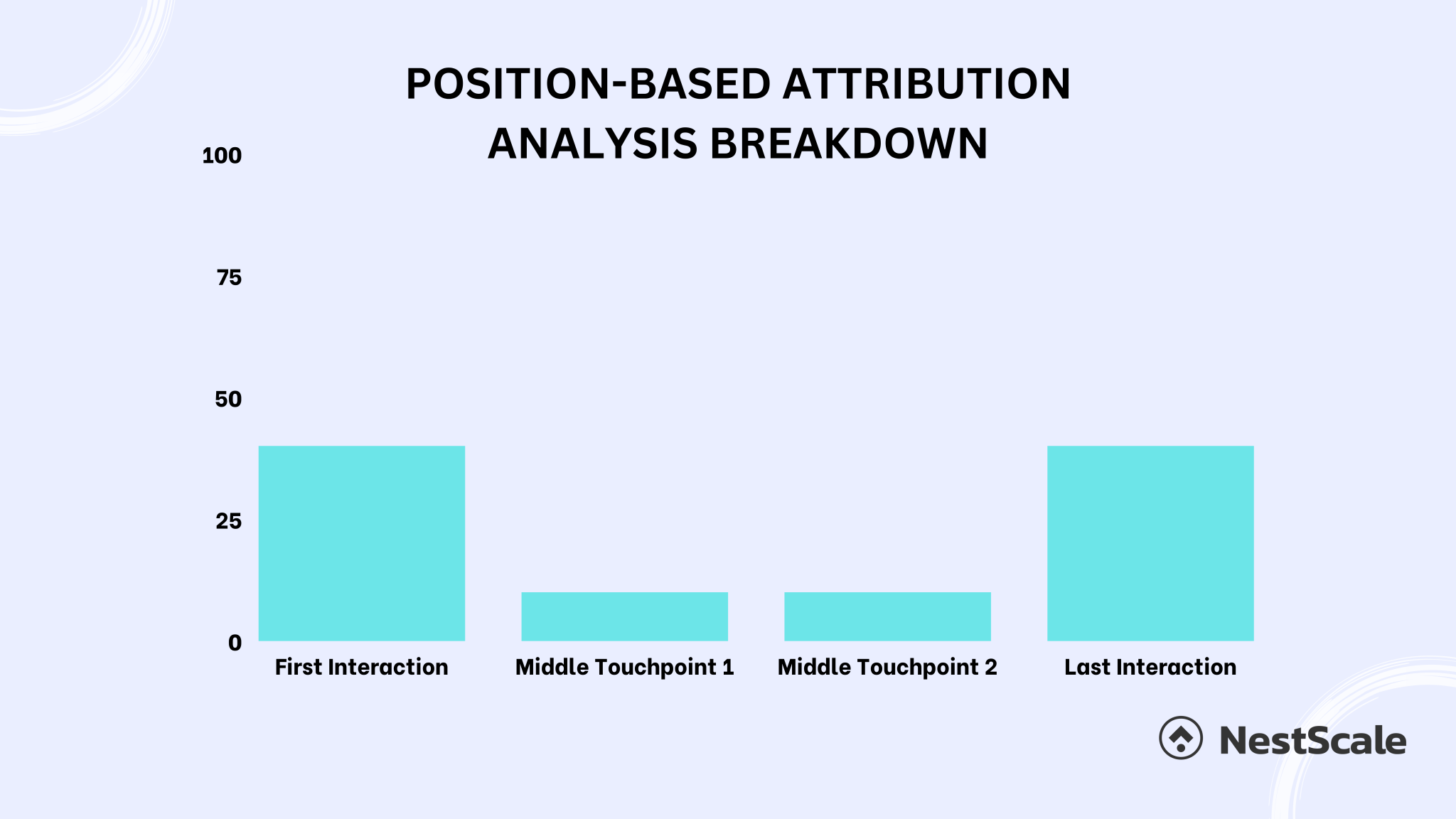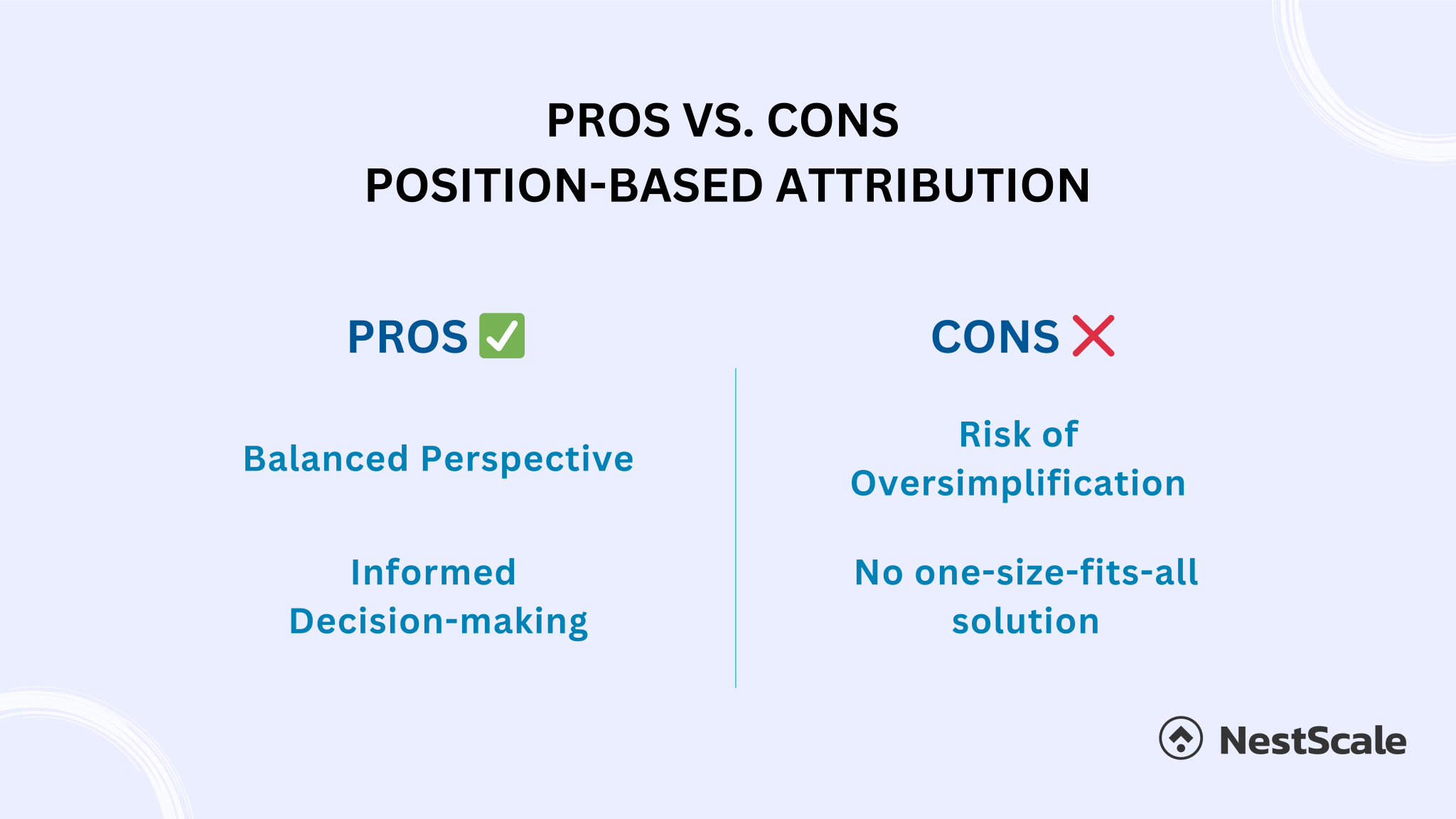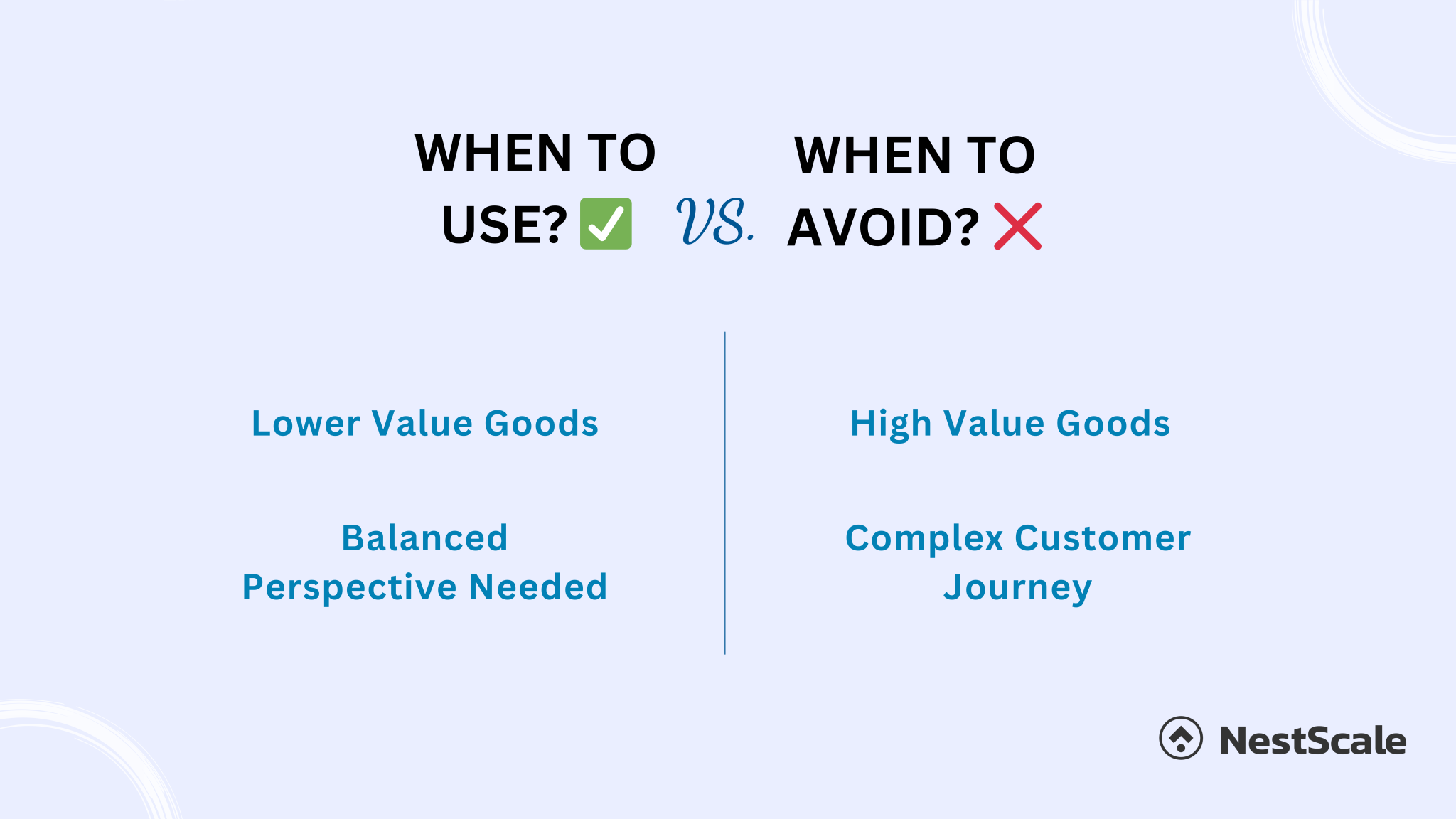One of the most balanced attribution model – Position-based (also known as U-shaped attribution), has been utilized by businesses all around the world to measure their digital marketing efforts. So what is it exactly? If you’re curious about how this framework works, stay tuned. In today’s blog post, we’ll delve into what the Position-based attribution model is. Also, we’ll discover how it works, and how you can leverage it to improve your marketing strategy.
What is the Position-based attribution model?
Before we go into the definition of position-based attribution, let’s first go over a brief overview of multi-touch attribution models which provide in-depth insights into the customer journey and the effectiveness of your marketing activities. They offer a clear illustration of how different touchpoints contribute to conversions by allocating credit to each point. This will not only help businesses to optimize their marketing strategies but also plan their budget more efficiently.
The Position-Based Attribution Model, also known as the U-shaped Attribution Model, is a type of multi-touch attribution model. With this framework, the majority of credit goes to the first and last touchpoints of the customer’s journey. When visualized into a chart, the chart shape sort of resembles the letter “U”, hence the name “U-shaped”.

How Position-based attribution works & example
The main principle of the Position-based attribution model (also called U-shaped attribution model) is that the degree of influence of each interaction in the customer journey varies. And The first, middle and last touchpoint all place and important role. Let’s further clarify this concept.

- First interaction: The Position-based Attribution Model allocates a considerable amount of credit (40%) to the first touchpoint in the customer journey. This emphasizes the importance of capturing the customer’s attention and sparking interest in the first place.
- Last interaction: Next is the final touchpoint in the customer journey. This essentially means the last step before the conversion or purchase. This point also receives a similarly significant share of credit (40%), meaning that getting your customer to commit to your business (leaving their information) is important to your customer journey.
- Middle touchpoints: The remaining credit (20%) will go to the middle touchpoints. These include actions like email opens, social media engagement, or product page views. Though these actions might not directly lead to conversion, they do play a critical role in nurturing leads and maintaining customer engagement.
To better understand this concept, let’s take a look at a position-based attribution example:
A customer intends to hire a catering service for an event in 2 months. After looking online, she sees Brand A’s targeted catering service ad on Instagram. Later on, she continues to visit brand A’s Facebook page and website. Then, after some consideration, the customer decides to register an account to receive email marketing. Afterwards, the customer follows through on a conversion action by clicking on a newsletter CTA.
According the position-based attribution model, the first interaction (Instagram ad) the last touchpoint (the customer registering an account on Brand A’s website), will each receive the most credit at 40%. The remaining 20% will split equally between the middle touchpoints, including the Facebook page and website visit.
Position-based vs. other attribution models
Now, we are going to determine if position-based attribution is suitable for your organization. First, let’s compare it to other commonly used attribution models. What are some of the key differences?
| Credit Attribution | Customer Journey Type | Implementation Barriers | |
| Position-based (U-shaped) | – Gives majority of credit to the first & last touchpoints. The remaining credit is evenly distributed among the middle touchpoints | – Longer, more complex customer journey | – Slightly more difficult to set up & use |
| Single-Touch | – Gives credit to only 1 touchpoint (first or last) | – Simple, straightforward customer journey | – Easy to set up & use |
| Linear | – Gives credit to all the touchpoints evenly | – Longer, more complex customer journey – The simplest among multi-touch attribution models | – Easy to set up & use |
| Time Decay | – Gives more credit to touchpoints closer to conversion stage | – Longer, more complex customer journey | – Slightly more difficult to set up & use |
| Custom/ Data-driven | – Gives credit to whichever touchpoints based on data & insights | – Longer, more complex customer journey | – Dificult to set up & use |
Pros & Cons of Position-based attribution
Like any other attribution model, the position-based model also comes with its own set of advantages and disadvantages. Understanding these can help you make an informed decision about whether it’s the right option for your marketing strategy.

Pros of Position-based attribution
- Balanced perspective: As we have discussed, this model recognizes the significance of all different touchpoints while also places a substantial emphasis on the first and last touchpoint. This balanced approach to the customer journey can help businesses pinpoint the most important points of interactions. It can also help businesses take into account and assess the different aspects of their marketing activities.
- Informed decision-making: By considering multiple touchpoints, the Position-based model allows businesses to make informed decisions about appropriate resource allocation. It also provides valuable insights into the customer journey that can lead to more effective marketing strategies.
Cons of Position-based attribution
- Risk of oversimplification: It’s true position-based attribution model takes into account all of the touchpoints along the customer journey. However, it also places a substantial amount of emphasis on only the first and last touchpoints. In this case, businesses might face the risk of an oversimplified customer journey, which underestimates the middle touchpoints’ importance.
- No one-size-fits-all solution: Determining the appropriate weightings for the touchpoints can be subjective and may vary based on your specific business goal. The Position-based attribution model might do more harm than good if your good is of high value, and requires customers more consideration before buying. In this case, businesses need to dedicate more efforts towards nurturing leads a.k.a the middle touchpoints.
- Implementation barrier: This is another drawback that is worth considering. Position-based attribution model set up and execution can be quite complex. This also requires comprehensive data tracking, advanced analytics tools, and a solid understanding of how to assign and distribute credit to various touchpoints. As a result, this can pose a barrier for smaller businesses with limited resources.
Is Position-based attribution right for your business?
Now that you are aware of some of the advantages and disadvantages of position-based attribution, let’s determine together if this model is a suitable option for your business.
Position-based attribution is generally perfect for cases where your business offers lower value goods. Also if you are seeking a balanced perspective regarding your marketing activities. More specifically:
- Lower value goods: If your products are of lower value and don’t require customers too much consideration (such as household items like grocery or toiletries). Then, the position-based attribution model might be a suitable choice. In this case, the first and last touchpoints are inarguably the most important interactions to focus on. Other interactions in the middle of customer journey should also be considered. However, they will not have too much influence on the customer’s decision.
- Balanced perspective needed: If your business wants to maintain a balanced perspective that recognizes the importance of both the first and last touchpoint. But also not eglecting the middle interactions, the Position-based attribution model is a good choice. This is especially relevant if your business has a clear understanding of the customer journey. Also if you can pinpoint which marketing activities have the most and least influence on the customer’s behaviors.
On the contrary, if your business offers high-value goods and has a long, complex customer journey, position-based attribution doesn’t seem like such a good choice.
- High value goods: Higher value goods (technological appliances, real estate, etc.) usually require customers more time and consideration before purchase. Therefore, businesses must devote a significant amount of efforts to nurturing leads. This means that a Position-based attribution model will be unsuitable.
- Complex customer journey: Products with a highly complex customer journey (eg: medical cosmetics) are also not a very good fit for this model. While this model does take into account all of the touchpoints, the majority of credit goes the first and last interactions. As a result, it will significantly underestimate the influence of important middle touchpoints on the customer’s buying decision.
So, have you made a choice? Choosing the right attribution model for your business can be a challenging task. Not to mention, it can change depending on your analysis goals and desired outputs. Your customer journey and buying process can also greatly influence whether a model is the right fit for you.
That’s why we really suggest you explore different marketing attribution models before making your final decision. Also, don’t be afraid to explore different models and experiment with them. Only through thorough research and experiment will you find the best fit for your business!
FAQs – What you may want to know more
Is rules-based and position-based attribution the same?
No, rules-based attribution and position-based attribution are not the same.
Rules-based attribution assigns credit based on specific criteria set by marketers, like giving 50% of the credit to the first and last interactions, while the rest is distributed according to predefined rules.
Position-based attribution specifically gives most credit to the first and last interactions (typically 40% each) and distributes the remaining credit evenly among the middle touchpoints.
So, while both involve assigning credit, the methods and structures they use differ.
What is an example of a Position-based Attribution?
An example of position-based attribution is when a customer interacts with three touchpoints—like an email, a social media ad, and a website visit—the first and last interactions each receive 40% of the credit, while the middle interaction gets 20%.
This highlights the importance of both the initial introduction and the final push that leads to a conversion!





















































